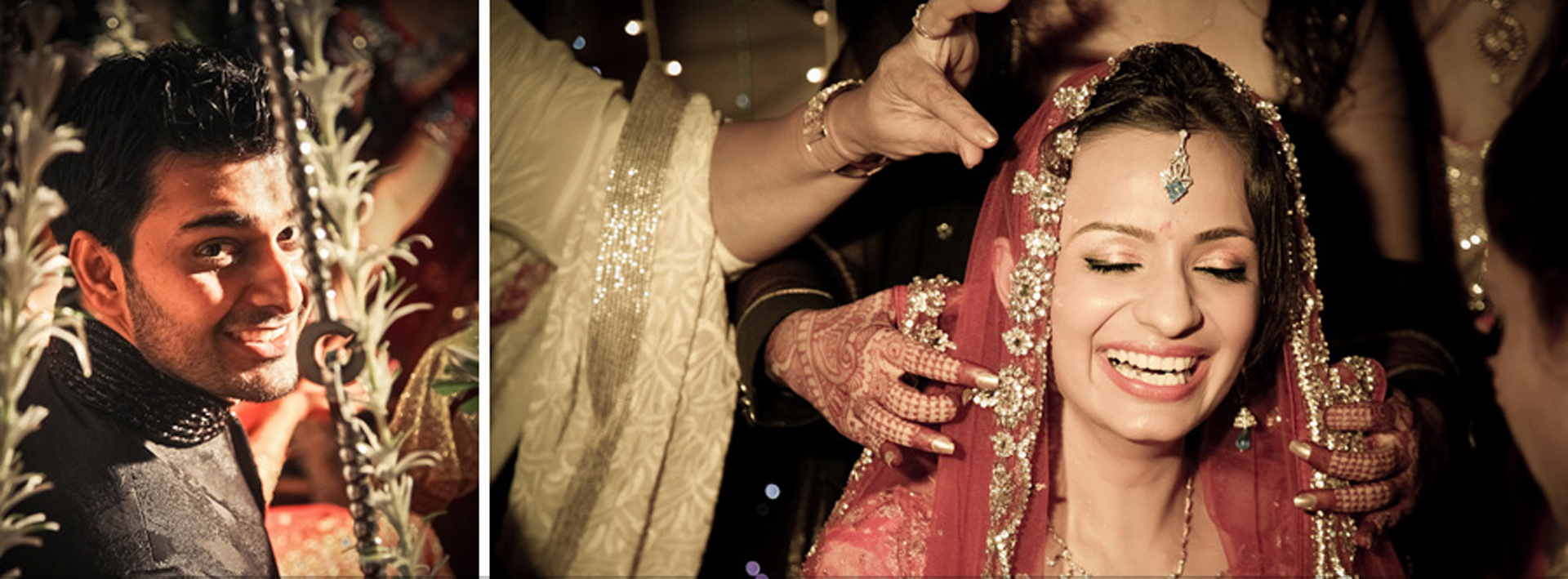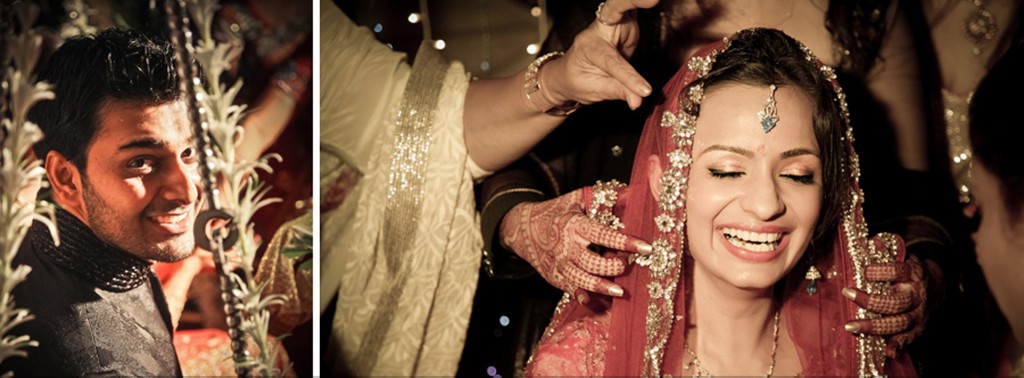
Roka or Tilak or Shagun
Roka is a formal announcement of the fact that the bride and groom have agreed for the wedding and that they do not need to look for another life partner. Back in the days, the ceremony was usually unplanned and once the couple agreed to wed, it saw the groom’s mother who would give a nose ring or heirloom ‘Nath’ to the bride. The bride’s family, on the other hand, would take turns applying ‘Tilak’ or vermillion on the forehead of the groom. Shagun or gifts were exchanged by both families, which would include dry fruits, saris, suits and jewelry. Although no rings would be exchanged during the ceremony, it would be considered as an unofficial announcement of an engagement and subsequent courtship.
Roka, however, is no longer a basic ceremony. Over the years, it has transformed into a lavish, elaborate affair, where both families make declarations to the world! It is also one of the biggest pre-wedding events for the bride and groom. Therefore, wearing a plain suit or sari won’t suffice on this day. You need a detailed, stunning outfit that can distinguish you from the guests and set you apart in the crowd.
Attires at the Ritual
One does not have to run from pillar to post to find the perfect Roka ensemble. A number of traditional and Indo-Western outfits are available for the event. But it always advised to go for something that isn’t too glitzy or heavy as one would need to move around a lot during the ceremony. These days women choose something comfortable yet stylish for the ceremony.
Anarkali being one of the top favorites is a chic and elegant attire. With a variety of cotton, net, synthetic, rayon and silk anarkali suits available in the market, the bride to be can have anything that suits her body type. If the bride is tall and slender, then having a floor length anarkali with embellished embroidery work is a perfect choice. If on the other hand, one wants something light, then an Anarkali with lace or gota work is apt. Swiveling Anarkali with pleated designs and a belt near the waistline can help divide the body and make it look leaner as well. Vibrant colors like Red, Pink, Mustard, Fuschia are some of the most preferred hues.
Sari, which is another all time favorite is a chic and flirty way of looking glamorous for the Roka event. From zari to brocade, silk, Cotton and Bandhani, saris are in galore and one can choose any that would suit the occasion and the bride’s personality.
Indo-western gowns and lehengas have picked up momentum on a large scale in the last few years and several brides have started going for this option as well. Indian version of gowns can have elaborate detailing and embellishment of sequins on the blouse area. An amalgamation of brocade, lace, pearls, kundan, and zari are extremely popular with this attire and add to the overall charm of the wearer. Colors like blue, pink, yellow, white, golden and black look beautiful with Indo-Western Gowns.
Men usually opt for a comfortable yet stylish kurta pajama which looks classic and traditional. A front open buttoned Sherwani with an embellishment of sequins and detailed embroidery looks wonderful for the Roka and tilak ceremony. Men usually opt for colors such as crème, gold, black, maroon, light yellow and light pink.
The roka ceremony is a wonderful start to a family bond besides the couple’s declaration of everlasting love and companionship. This ceremony has become extremely popular throughout India and beyond and a lot of careful planning goes into its making.
References
Categories: Wedding Rituals, Weddings & Festivals

